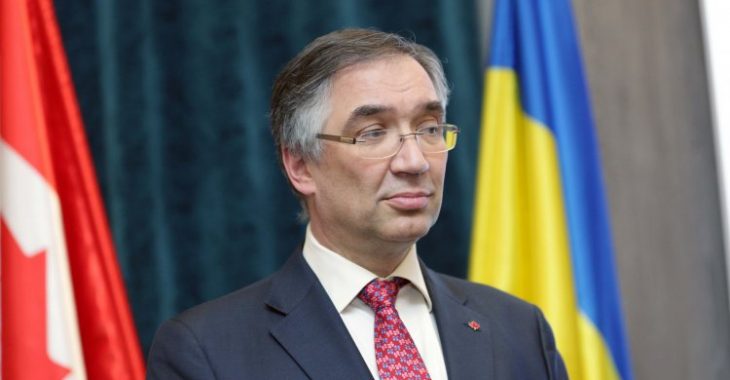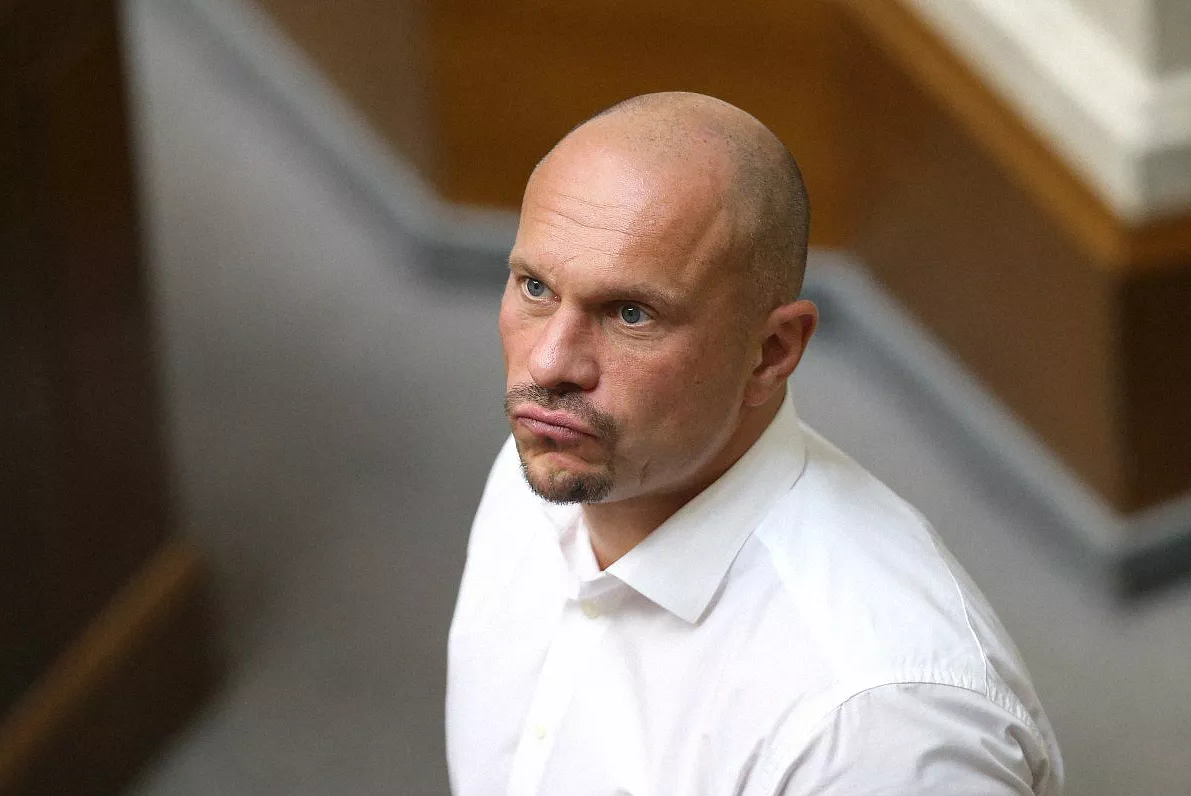It has become a tradition at the beginning of each new year to look back at the successes and failures of the last year.
Unfortunately, international readers, viewers, and listeners did not learn much about the successes of Ukraine, a country not so far away, but important for the European continent.
Mostly, they got negative news or reports of tragic events. These pieces of information can create a media image of a hopelessly failed country.
Let me, therefore, convince you of the opposite! No, I will not try to be balanced, and I will just mention the positives here, to balance the scales of the media image of Ukraine at least a little. Of course, it is clear to me that for each of the following 10 points one can say the phrase: "yes, but...".
It is a great pity that despite the endless influx of negative information about Ukraine, Europeans are not able to notice that this large post-Soviet country is transforming into a potential modern and dynamic economic tiger.
Choosing 10 successes of Ukraine in 2019 was difficult, because there are many successes of Ukraine. I did not mention, for example, the victory of Ukraine at the world football championship under 20 years.
Last but not least, we must not forget that Ukraine did not come to these successes suddenly, but that these are successes that are a result and consequence of the country's changes and reforms since 2014.
1. Economic growth
In 2019, Ukraine recorded the highest economic growth (3.5%) since the onset of the economic crisis in 2008. Moreover, in 2019, economic growth increased dynamically. While it was 2.5% in Q1, it was 4.6% in Q2 and 4.2% in Q3. In the following years, it is expected that the GDP growth will gain momentum (in 2020 to 3.7%, 2020 to 4.1%).
All this despite the ongoing Russian aggression against Ukraine, which meant the loss of one-third of the country's industrial potential and the need to invest in the country's defense capability (up to 10% of the state budget) instead of increasing support for investment in development, such as infrastructure. Nor should we forget that the country's growth potential is still significantly hampered by corruption and bureaucracy. Last but not least, the upcoming liberalization of the agricultural land market, which is expected to increase Ukraine's GDP by at least another 1%, will also have a positive impact on GDP.
2. The strengthening of the hryvnia and the growth of gold and foreign currency reserves
Thanks to solid economic growth and macroenomic stability, the Ukrainian currency also flourished. In 2019, it became the fastest strengthening currency in the world, when it managed to appreciate by 19% against the dollar.
This contributed to gold and foreign currency reserves growing by 22% in 2019 ($25.3 bn), which were the highest since 2008. It is worth noting that since 2014, when they were only $7.5 bn and the country was in real danger of economic collapse, reserves have gradually increased.
3. Trade growth and EU orientation
After Euromaidan, which was a public reaction to the ex-President Yanukovych's refusal to sign the Association Agreement with the EU, not only the agreement itself, but also a key component of it, the Deep and Comprehensive Free Trade Area (DCFTA) agreement, entered into force. This, when fully fulfilled, will lead to Ukraine becoming part of the European single market.
The DCFTA agreement immediately liberalized trade for 96% of all products exported to or imported from the EU, thus helping to quickly reorient Ukrainian foreign trade from the post-Soviet space to European Union markets. And while Ukrainian manufacturers needed time to adapt to EU requirements and standards, the results in the early years of DCFTA are remarkable.
The growth rate of Ukrainian foreign trade with the EU is the highest among all destinations. Trade with the EU, which grew by double-digit rates (20-25%) until last year, while slowing somewhat to 7% last year, has doubled over the past 10 years. The EU has become Ukraine's largest trading partner, replacing post-Soviet countries. Trade with the EU now accounts for 42% of foreign trade, compared to 26% in 2013.
4. Record year in agriculture
Thanks to good weather and increasing investment in agriculture, Ukraine recorded a record cereal harvest in 2019 (75 mn tons, an increase of 7% compared to 2018).
Ukraine's agricultural trade with the EU was also affected by the DCFTA agreement, although many Ukrainian exports are subject to EU duty-free quotas. However, it did not prevent Ukraine from becoming the third-largest exporter of agricultural products
(EUR 7.3 bn in total) to the European Union, after the US (EUR 12.3 bn) and Brazil (EUR 11.7 bn). What is also interesting is the rocket increase (+41%) of this export. Ukraine thus contributed more than half of the growth of agricultural exports from third countries to the European Union. So again the saying that Ukraine is the breadbasket of Europe begins to apply.
5. Salary growth
In 2019, the average real wage rose by 13%, which allowed to increase the minimum wage. The Ukrainian minimum monthly wage ($200) was higher for the first time since independence in 1991 than in Russia ($195) or Belarus ($177).
The average salary last year jumped (converted to dollars) to $450 compared to $ 200 in 2016.
These economic results also extend to other areas:
6. Tourism boom
Thanks to the introduction of a visa-free regime with the EU (in 2017), the prestige of having a Ukrainian passport has also increased. Over the past 10 years, the number of countries where Ukrainian citizens can travel without a visa has doubled. On the international Henley ranking, which measures the prestige and "strength" of individual national passports, Ukraine has now ranked 43rd, making it the sixth most dynamic country in the world in this international comparison.
Thanks to the visa-free regime and the entry of low-cost airlines into the Ukrainian market, there has been a strong increase in the number of Ukrainian citizens visiting the EU. Last year it was 3 million Ukrainian tourists, up from the 550,000 people who visited the EU during the first year of the visa-free regime.
The growing demand for tourist services and the desire of Ukrainians to discover "Europe" has helped significantly to increase the supply of air and rail connections between Ukraine and the EU. Today, you will be able to reach not only Kyiv but most major Ukrainian cities through a wide range of low-cost airlines including major European players such as Ryanair and Wizzair. The European carrier Flixbus began to travel to Ukrainian cities last year.
Last year, Ukrainian airports handled a record number of passengers: a total of 24.3 million passengers, representing an annual increase of 18.5%.
The largest airport in the country, Kyiv Boryspil passed 14 million passengers
. For comparison, in 2014 that number was more than twice smaller - 6 million passengers.
7. Development of road infrastructure
In 2019, 371 km of new roads were built throughout the country and a total of 2,200 km of roads were repaired. Again, these were the best statistics in the last 10 years. About 4,000 km of roads are expected to be repaired this year.
8. Cultural boom
After Euromaidan, Ukrainian culture is also experiencing a spectacular boom. There are new young artists, writers, poets, filmmakers, singers, actors, painters, sculptors, etc. who feel the need to reflect on what has happened recently in the country and with its inhabitants. Importantly and interestingly, most of this new cultural wave is already in the mother tongue - Ukrainian, which only contributes to the formation of national self-confidence and identity.
Ukrainian cinematography offers interesting statistics in this context. While only 12 Ukrainian films were produced in 2013, their number gradually increased: in 2015 to 24, in 2018 to 48 and last year it was already 65 films.
9. National self-confidence
Ukrainian society, its perceptions, values, and opinions changed compared to the time before Euromaidan. The Ukrainian society , which has passed and is still undergoing stress tests, is now more aware, proud and mature.
Compared to 2010, when only 57% of the population of Ukraine identified with the term "citizen of Ukraine," it is 65% today.
In 2019, 83% of Ukraine's population told sociologists that they considered themselves patriots. Patriotism and identification with Ukraine is a national issue, and it also affects the eastern and southern regions of Ukraine - 79% and 78% of respondents, respectively, considered themselves Ukrainian patriots. Here too, there is a positive momentum: in 2010, 76% of all respondents considered themselves patriots of Ukraine.
2019 also saw the historically highest number of those who would once again support Ukraine's declaration of independence - 82% of respondents. Just before Euromaidan, 61% of Ukrainian citizens would support such a choice.
10. Satisfaction with the overall development of the situation in the country
So it is no wonder that Ukrainian citizens are gradually regaining optimism, confidence and hope that developments in the country are moving in the right direction.
In 2019, a record number of respondents thought the country was developing in the right direction - a total of 44% compared to 6.9% in 2009. In addition, more than 60% of respondents think 2020 will be better than last year and this sense of optimism that the worst Ukraine is behind is again widespread throughout the country.

Prior to that, he worked for the last 12 years as an EU diplomat as spokesperson for the EU Delegation in Kyiv.
Even before that, since his university studies in Poland, he devoted himself to his two professional passions of life: Eastern and Central Europe and the process of European integration. Before coming to Kyiv, he worked, among others, in People in Need, the East-West Institute, or was a member of the European advisory body of the European Social and Economic Committee.
Long ago, in the last century, he was awarded the Young European of the Year (1997) for these passions.
Read also:
- Can Ukraine escape the post-communist trap?
- Reforms in Ukraine: success or a farce?
- Ukraine will be a European country in a few decades time, but poor for many years to come – economist
- Ukraine’s path to the visa-free regime with the EU, in cartoons
- Only Ukraine’s success can influence positive development of Russia – Lithuania’s ex-Prime Minister





